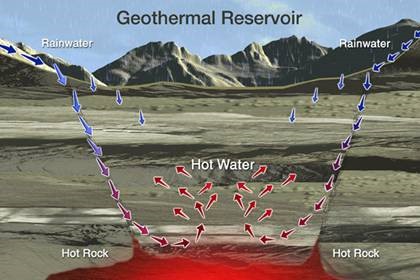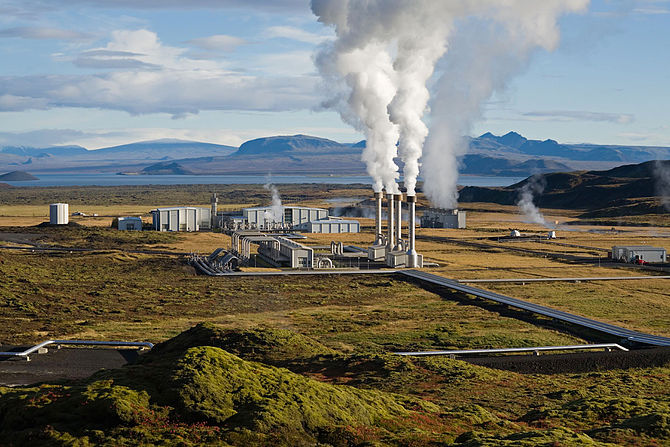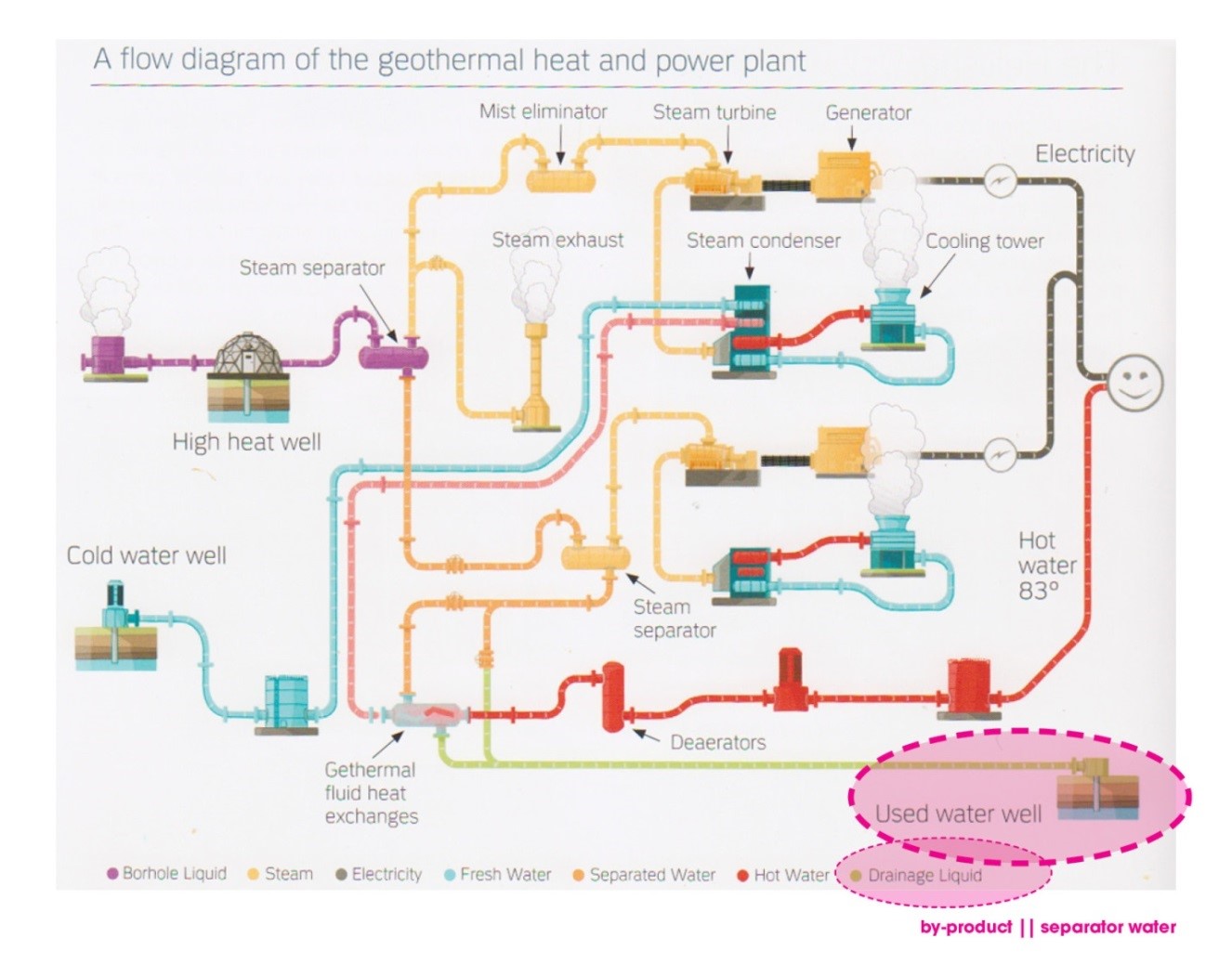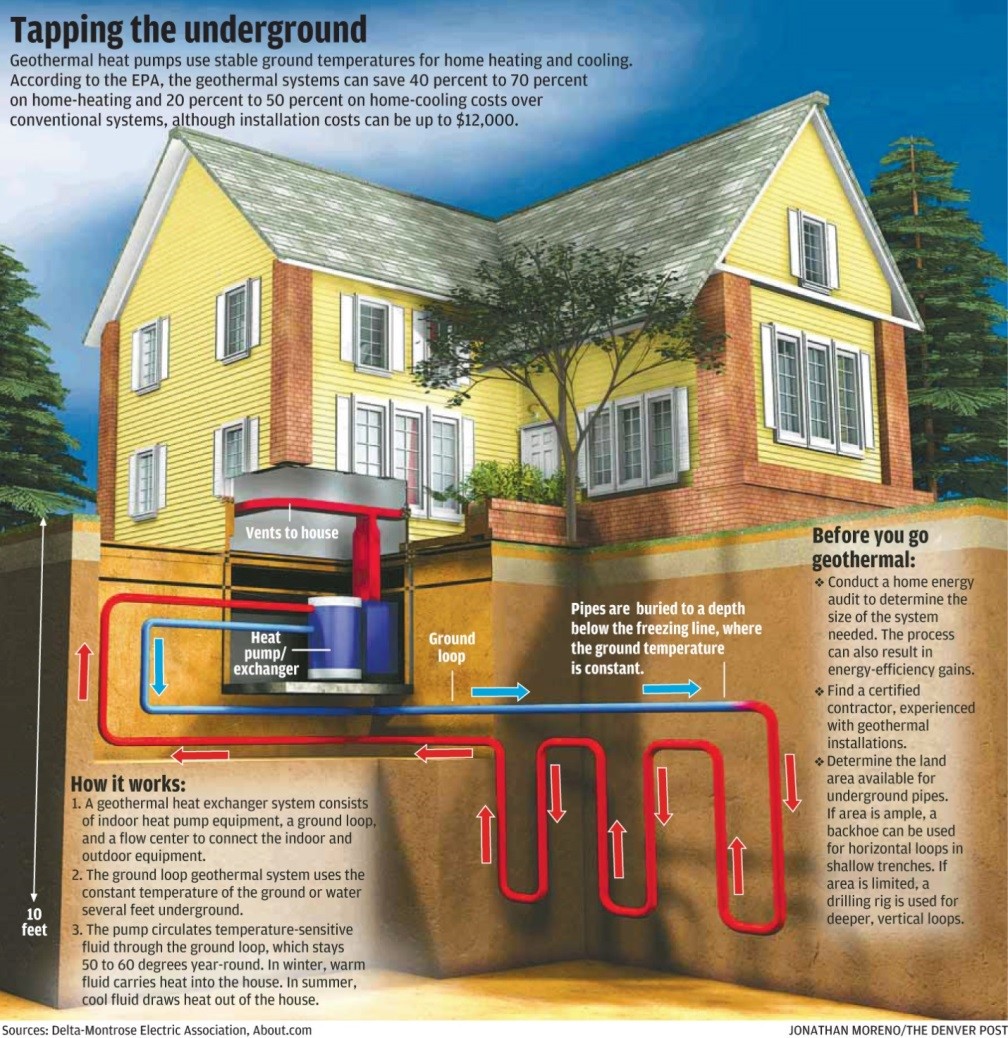How Geothermal Energy Works
Posted by Jonathan Allcock on August 28, 2014
The amount of heat within 10,000 metres (about 33,000 feet) of the Earth's surface contains 50,000 times more energy than all the oil and natural gas resources in the world[1]. Geothermal energy systems can harness the internal heat of the earth for either power generation or heating and cooling.
 According to the Geothermal Energy Association, a geothermal system requires heat, permeability and water. The heat from the Earth's core continuously flows outward, heating nearby rock and water to temperatures as high as 700°F. When water is heated by the Earth’s high temperature, hot water or steam can be trapped in permeable and porous rocks under a layer of impermeable rock and a geothermal reservoir can form. This hot geothermal water can manifest itself on the surface as hot springs or geysers, but most of it stays deep underground, trapped in cracks and porous rock. This natural collection of hot water is called a geothermal reservoir[2].
According to the Geothermal Energy Association, a geothermal system requires heat, permeability and water. The heat from the Earth's core continuously flows outward, heating nearby rock and water to temperatures as high as 700°F. When water is heated by the Earth’s high temperature, hot water or steam can be trapped in permeable and porous rocks under a layer of impermeable rock and a geothermal reservoir can form. This hot geothermal water can manifest itself on the surface as hot springs or geysers, but most of it stays deep underground, trapped in cracks and porous rock. This natural collection of hot water is called a geothermal reservoir[2].
In order to use geothermal energy for power generation, it is important to understand how thermal energy in the ground can be used to turn a turbine and generate electricity. First, the thermal energy extracted from the geothermal well is used as a heat source to boil the water in the steam generator. Once the boiling water begins to turn to steam, it is sent to a turbine-generator where it turns the turbine and rotates the generator, thereby generating electricity. If the system has a high efficiency, it is likely that there are multiple heat recovery mechanisms. These types of systems are often used to heat local buildings and are called Combined Heat and Power Plants (CHP). One example of this type of system is the Hellisheidi power plant in Iceland, which produces approximately 303MW of electricity and 400MW of thermal energy (see Figure 1).

Figure 1: The Hellisheidi geothermal power plant was developed in an area of 13,000m2 near Mount Hengill in the Hengill geothermal area, one of the largest high temperature geothermal fields in Iceland covering an area of 110km2. Power is generated using a combination of six high-pressure and one low-pressure steam turbines[3].

Figure 2: A technical drawing of how the Hellisheidi Power Station generates geothermal energy
The second application that geothermal systems can be used for is heating and cooling. This works by using a series of heat exchangers to transfer the thermal energy from the geothermal well to the air coming from the incoming cold air return HVAC duct in the building. A geothermal energy system for home heating and cooling can be quite affordable, depending on the size of the system needed. The figure below shows a complete residential geothermal heating and cooling system.

Figure 2: This figure shows a residential geothermal system used for heating and cooling a house
Geothermal is a clean, reliable, sustainable and cost-effective energy system which has the potential to help solve some of Canada’s greatest energy challenges by providing energy security, economic growth and reducing our CO2 emissions[4].
[1] Union of Concerned Scientists, “How Geothermal Energy Works”, [Online]. Available: http://www.ucsusa.org/clean_energy/our-energy-choices/renewable-energy/how-geothermal-energy-works.html
[2] Geothermal Energy Association, “Geothermal Basics”, [Online]. Available: http://geo-energy.org/basics.aspx
[3] Forbes.com, “Geothermal Power Steaming Over Wind And Solar Energies”, [Online]. Available: http://www.forbes.com/sites/kensilverstein/2014/08/25/geothermal-power-steaming-over-wind-and-solar-energies/
[4] Canadian Geothermal Energy Association, “About Geothermal Energy”, [Online]. Available: http://www.cangea.ca/about-geothermal.html
Edited from original submission.
Filed under: Students on Sustainability